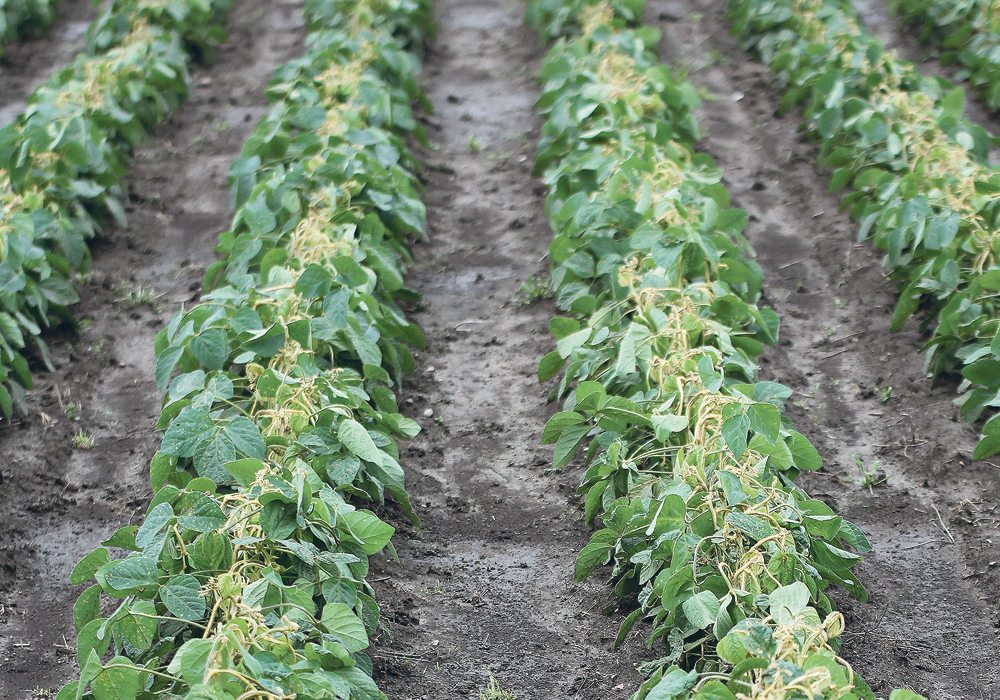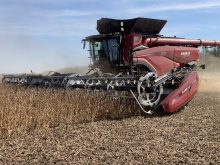A record number of off-target spray drift incidents with dicamba last year on U.S. soybean acres has the industry on edge as a new growing season approaches.
“It’s an anxious time for anybody in pesticides down here in the States, especially in the Midwest or the mid-south,” said spray applications expert Andrew Thostenson from North Dakota State University.
“Nothing like it has ever happened in the history of pesticide use in this country and we’re fixing to double the number of acres treated (with dicamba) this year. Everybody is apprehensive about the whole thing.”
Read Also

Bunge’s crop mix is changing
Bunge has predominantly been a soybean processing firm, but that’s about to change after the merger with Viterra with softseed processing and grain merchandising gaining ground.
Last fall the Environmental Protection Agency (EPA) reached an agreement with BASF, DuPont and Monsanto on stricter label requirements for dicamba applications:
- Only certified applicators with dicamba-specific training can apply the herbicide.
- Records of dicamba use must be maintained by farmers, including field-level weather measurements.
- The maximum wind speed where dicamba can be applied has been dropped to 10 m.p.h. from 15 m.p.h.
- Dicamba can be applied only during daytime hours.
- Labels carry specific language about tank cleanout.
- There is also increased emphasis on the risk to nearby sensitive crops, including that applicators may not apply the product when wind is blowing toward adjacent susceptible crops.
Thostenson said the new requirements will be difficult to follow.
“I frankly don’t see how people will be able to apply it within the label requirements, but I guess we’ll find out,” he said.
There are two ways dicamba can drift off-target and cause damage. There is physical drift during spray application, and drift from volatilization following an on-target application.
Physical drift can be avoided by following the application requirements on the label, including not spraying when there is a temperature inversion.
It is much more difficult to prevent damage from dicamba volatility, especially when a temperature inversion occurs.
“We can hit crop or we can hit the weeds or hit the soil with the chemical, and then sometime after the application, the chemical starts to gasify. It vaporizes off the plant surfaces or the soil surfaces and when it gets into an inversion situation, the reverse happens. It literally suspends the gas molecules in the air,” Thostenson said.
The gas molecules do not dissipate in an inversion and they can be moved on a light wind to a neighbouring field, which can cause problems when they land on a susceptible plant.
Thostenson has been studying dicamba drift since 2010, and he said the chemical can volatilize off a field up to 96 hours after application.
“This is how we believe a significant amount of 3.6 million acres of injured soybeans occurred in the United States last year, as a combination of physical drift and volatility drift that was exacerbated by an air temperature inversion,” Thostenson said.
Pesticides have the potential to drift a considerable distance.
“We know that in studies with Washington State University that the movement of these things can be tens of miles, upwards of 60 or 70 miles of movement. We’ve observed that with things like 2,4-D and grape production in Washington State,” Thostenson said.
He said 2,4-D formulations caused serious issues in Australian cotton fields during the last cropping season.
“There are indications there (Australia) where it has been observed to move up to 60 miles down range,” Thostenson said.
“I think those are fairly extreme situations. I don’t think that’s something that is a normal situation. But I can tell you from what I’ve observed and what I’ve read that it’s not outside of the realm of reasonable that the off-target movement could certainly move 10 miles down range in an inversion,” Thostenson said.
















